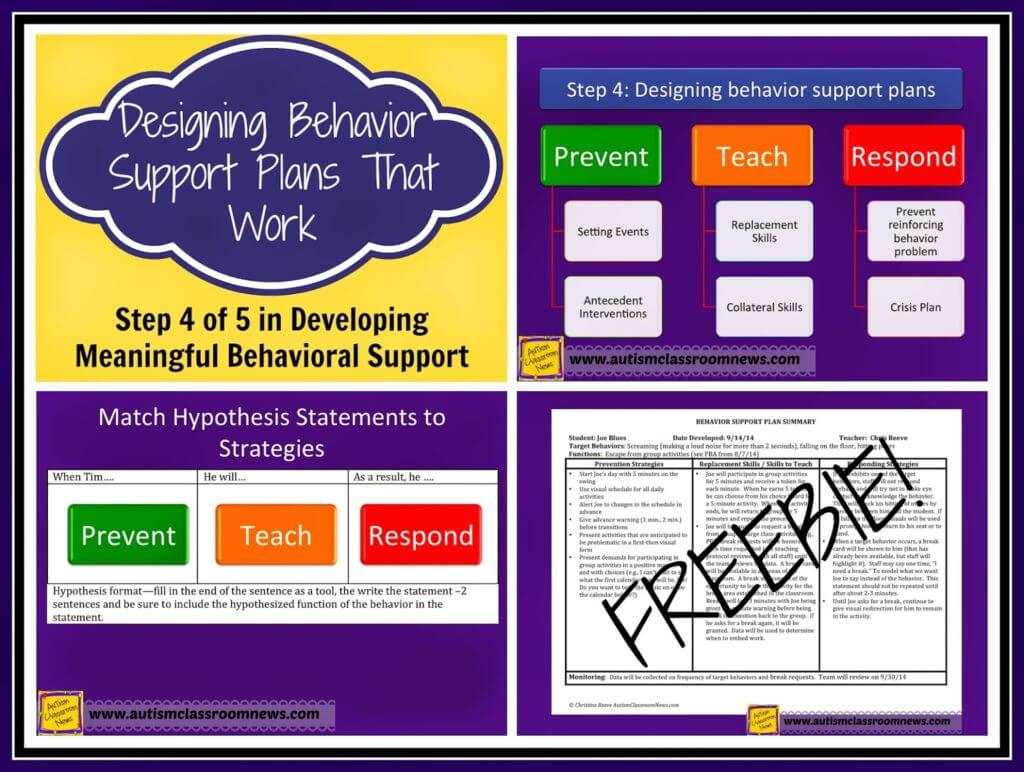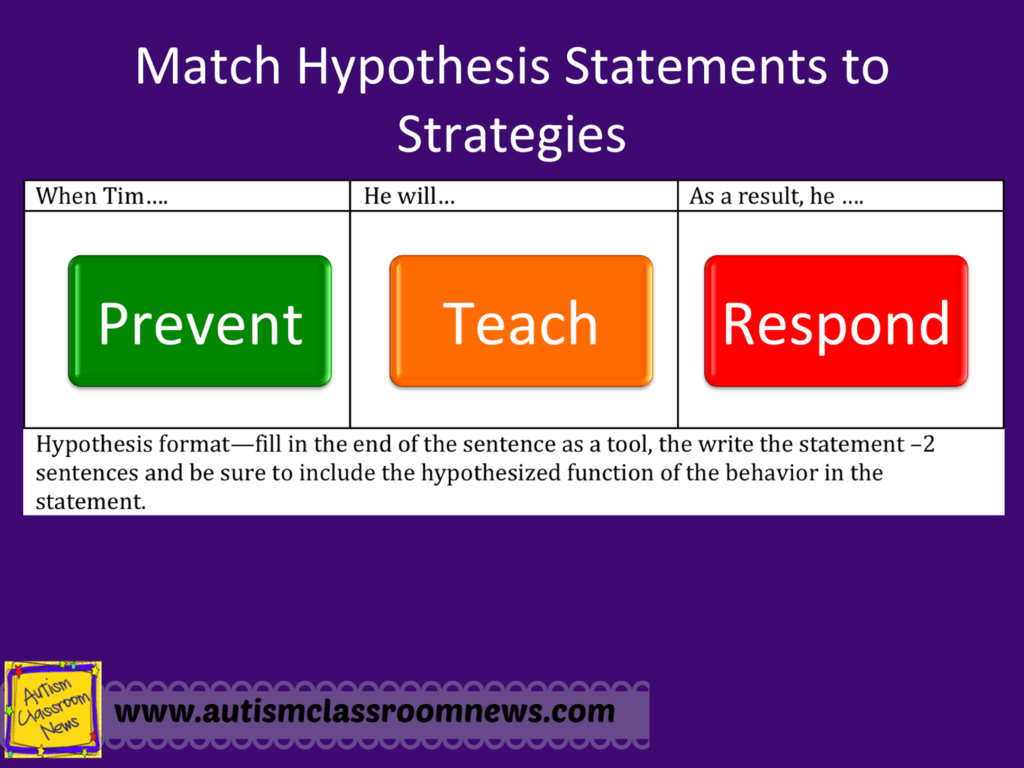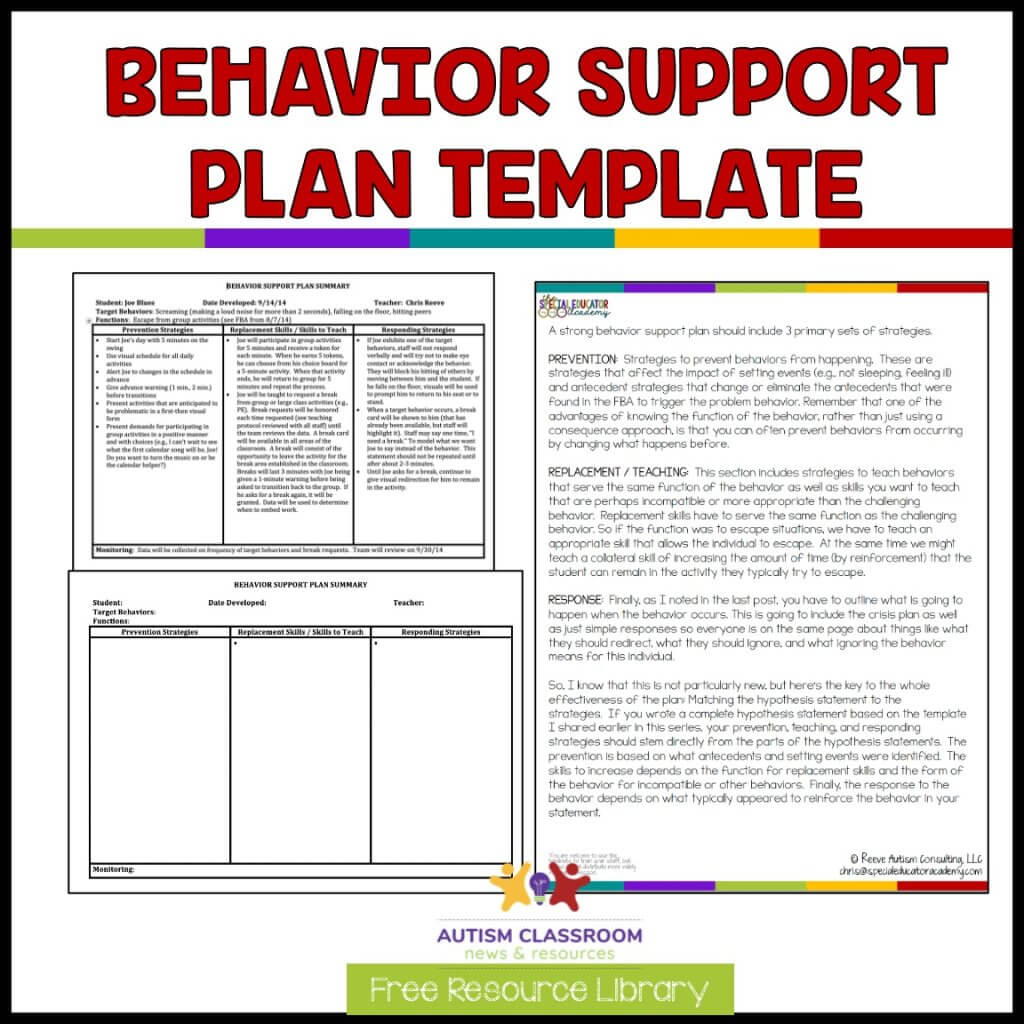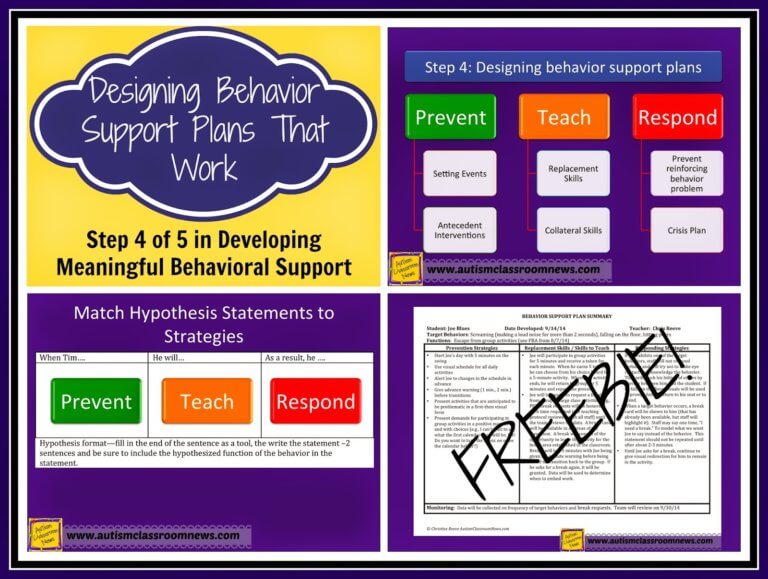
The FBA is only as useful as the plan that comes out of it. Without a functional plan that is based on the FBA, having the best FBA in the world won’t help you. And yet it is clear that this is one of the hardest steps in the process. Last time I talked about what behavior plans are and are not. While the format of the plan should always be secondary to its functionality, I thought I would share some tips for putting the plan together along with a freebie format that I often use to create plans.
One of the primary considerations in developing a behavior support plan is to make sure that it is based on the hypotheses that you developed in your FBA. Without that connection, it isn’t going to work. So many people do an FBA and write the behavior support plan and don’t connect the two. You need to be able to DIRECTLY connect the two so I wanted to share an easy way to do that.

A strong behavior support plan should include 3 primary sets of strategies.
PREVENTION: Strategies to prevent behaviors from happening. These are strategies that affect the impact of setting events (e.g., not sleeping, feeling ill) and antecedent strategies that change or eliminate the antecedents that were found in the FBA to trigger the problem behavior. Remember that one of the advantages of knowing the function of the behavior, rather than just using a consequence approach, is that you can often prevent behaviors from occurring by changing what happens before.
REPLACEMENT / TEACHING: This section includes strategies to teach behaviors that serve the same function of the behavior as well as skills you want to teach that are perhaps incompatible or more appropriate than the challenging behavior. Replacement skills have to serve the same function as the challenging behavior. So if the function was to escape situations, we have to teach an appropriate skill that allows the individual to escape. At the same time we might teach a collateral skill of increasing the amount of time (by reinforcement) that the student can remain in the activity they typically try to escape.
RESPONSE: Finally, as I noted in the last post, you have to outline what is going to happen when the behavior occurs. This is going to include the crisis plan as well as just simple responses so everyone is on the same page about things like what they should redirect, what they should ignore, and what ignoring the behavior means for this individual.
So, I know that this is not particularly new, but here’s the key to the whole effectiveness of the plan: Matching the hypothesis statement to the strategies. If you wrote a complete hypothesis statement based on the template I shared earlier in this series, your prevention, teaching, and responding strategies should stem directly from the parts of the hypothesis statements. The prevention is based on what antecedents and setting events were identified. The skills to increase depends on the function for replacement skills and the form of the behavior for incompatible or other behaviors. Finally, the response to the behavior depends on what typically appeared to reinforce the behavior in your statement.

So, when I start to put a plan together, I plan it along those lines. My hypotheses statements (often more than 1) have to lead the plan and outline the strategies. Sometimes, depending on the detail needed to describe the strategies, I can use the format below to serve as the behavior plan. Below is an example I filled out and then you can click on the link below it for a freebie Word download to use it. Over the next posts, I will talk about the strategies that go into the different areas of the plan. Also below are some books that might be helpful in developing behavioral support plans using this approach.
sign up for free tips each week in your inbox and Grab a free behavior support plan template from the resource library

Includes directions and a word document you can edit to create your own behavior support plan for you student. Also included is the sample behavior support plan shown earlier in the post.







